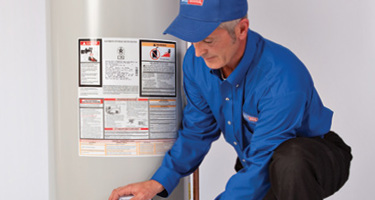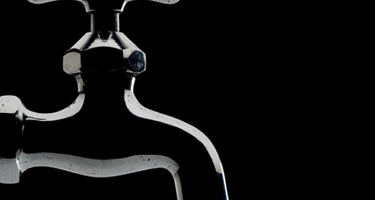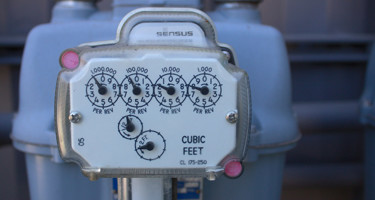
If you're dealing with a bathroom sink leaking on the floor or inside your sink cabinet, you've come to the right place. A leak under your bathroom sink not only disrupts daily routines but can also lead to significant water damage, mold growth, and major plumbing repairs if left untreated.
In this guide, we'll help you understand the top causes of a leaky sink, solutions to stop the leak, and when it's time to call a professional.
ARS/Rescue Rooter can solve any of your leaking problems. Call today and we'll fix it for you.
Is a Bathroom Sink Leaking Dangerous?
Yes! A leak under the bathroom sink might be more serious than a leak elsewhere. If the plumbing is hidden inside a closed vanity, leaks might go unnoticed for an extended period. Over time, this can lead to water damage, warped cabinetry, or even rotting wood beneath the floors.
These leaks often occur only when the sink is in use, so water doesn't collect in a visible puddle. Instead, the moisture can soak into the floor and surrounding materials, raising the humidity levels and creating ideal conditions for mold growth.
If you notice a musty or overpowering odor, mold may already be growing in a hidden area. Mold poses a health risk and spreads quickly if left untreated. Mold remediation should be handled by a licensed professional immediately. Contact our emergency services for fast, 24/7 expert help.
How Your Bathroom Sink Drain Assembly Works
If you're wondering how to figure out where a leak under the bathroom sink is coming from, it helps to know the parts that could be causing the problem. Every sink is unique, and bathroom sinks differ from kitchen sinks. However, many components are common across all types.
Here are some of the most typical sink parts and their functions:
- Faucet: The main fixture where water flows out. It includes components like the water spout, controls, gaskets, flanges, aerators, washers, and various screws.
- Controls: These activate the tap water. Options include single-lever controls that adjust temperature by rotation or separate hot and cold handles.
- Basin: The bowl-shaped part of the sink that holds water. It includes a drain at the bottom to allow water to flow out.
- Drain: Allows water to flow out of the basin. It connects to the P-trap and plumbing system hidden behind the wall.
- Tailpiece: A pipe that attaches to the bottom of the sink drain, directing water toward the P-trap.
- Water supply lines: Flexible tubes that connect to the faucet controls, delivering hot and cold water to the sink.
- P-Trap: A curved pipe beneath your sink that traps water to block sewer gases from entering your home. Most modern P-traps are two-piece assemblies.
- Cleanout: A special fitting near the P-trap that allows for easier removal of clogs and maintenance.
- Shut-off valve: A small, oval-handled valve connected to braided metal lines, used to stop water flow to the sink without your home's main water supply.
- Stoppers: These allow you to seal the drain to fill the basin with water. They include a lift rod that raises and lowers the stopper.
- Strainer nut, rubber gasket and friction gasket: These components ensure a watertight seal between the sink and drain assembly. Plumber's putty is often used to keep them in place.
How to Identify the Source of the Leak
The first step in repairing your bathroom sink leak is locating the leak. Once you've figured out where the leak is coming from, you'll be able to take the appropriate action.
- Visual inspection: Look for water stains, corrosion, or mineral deposits around the sink's plumbing components.
- Dry test: Place dry paper towels around the suspected areas and run water through the sink. Check the towels for moisture to identify leak sources.
- Check the P-trap and drain assembly: Inspect these components for any signs of wear, cracks, or loose connections.

6 Common Leaks and How to Fix Them
Once you identify where the leak is coming from, you'll have a better idea of whether you can fix it yourself or need to call a professional.
Here's how to handle leaks in the most common locations:
1. Leak at the Shut-Off Valves
What's happening: Over time, the hot and cold-water supply shut-off valves wear out and start leaking. If you've already tried tightening the connections but there is still leaking, the valves must be replaced.
Solution:
- Turn off your home's main water supply.
- If the valve is attached with a compression fitting, you may be able to unscrew it and replace it yourself.
- Use plumber's tape on the new connection to ensure a tight seal.
When to call a pro: If the valve is soldered onto the pipe, you'll need a licensed plumber to remove and replace it safely.
Special Note: High water pressure can cause leaks in any location, as well as faucet dripping. Make sure to ask a professional about your water pressure. When pressure is too high, it can increase your water bills and damage pipes, water heaters, and appliances or cause knocking water pipes.
2. Leak at the Water Supply Hoses
What's happening: The flexible water supply hoses can loosen or crack over time.
Solution:
- Use pliers to gently tighten the connections at both ends.
- If that doesn't solve the problem, turn off the main water, remove the hose, and inspect the rubber gasket,
- Replace the gasket or the hose if it's damaged.
- Reassemble the drain components as before, making sure to secure them as tightly as possible.
- Test for leaks by turning on the water and watching for any drips underneath your sink. If you see any leaks, attempt the process again to make sure the gasket is properly aligned.
When to call a pro: If this repair is out of your wheelhouse or it's still leaking after a replacement, schedule a service with the professionals at ARS and we can do it for you.
Tip: Always replace old or brittle hoses with braided stainless steel ones—they're more durable and resistant to leaks.
3. Leak at the P-Trap
What's happening: Leaks at the curved-shaped P-trap are often due to loose or worn connections.
Solution:
- Tighten the slip nuts by hand.
- If that fails, use an adjustable wrench or pliers to gently secure them.
When to call a pro: Still leaking? The next step would be to remove the P-trap, inspect for cracks and replace if necessary. While some homeowners are skilled at this type of bathroom sink repair, we recommend calling a professional.
4. Leak at the Sink Drain Flange
What's happening: A leaky flange can cause water to seep underneath the sink each time it's used.
Solution:
- Remove the sink drain assembly and clean the area thoroughly.
- Apply fresh plumber's putty around the flange.
- Reinstall the assembly and tighten everything securely.
When to call a pro: If the flange is corroded or damaged, or if you're unsure how to remove the drain, it's best to call a plumber.
5. Leak at the Drain Pipe (Tailpiece or Other Parts)
What's happening: The tailpiece that connects the sink drain to the P-trap can crack or loosen.
Solution:
- Remove the P-trap to access the tailpiece.
- Wrap the threads with plumber's tape and replace the bathroom sink drain pipe if needed.
- Reassemble the system, ensuring tight connections.
When to call a pro: Leaks from the drain-assembly are the most difficult to repair, especially if the leak is hard to reach, involves multiple broken components, or causes drips even after replacing parts. We recommend the assistance of a licensed plumber.
6. Leak at the Basin
What's happening: Hairline or larger cracks in the sink basin can lead to slow leaks, especially when the sink is full or used frequently. These leaks may not be obvious right away, but can cause long-term water damage.
Solution:
- Clean the cracked area thoroughly with a mild abrasive cleaner.
- Make sure the area is completely dry before continuing.
- Apply a waterproof epoxy or adhesive designed specifically for repairing cracks in porcelain, ceramic, or your sink's material.
- Fill the crack and smooth the surface with a putty knife or applicator.
- Let the epoxy cure fully according to the product instructions—this usually takes 24 hours.
When to call a pro: Learning how to fix a cracked bathroom sink might be more complicated than other repairs. If the crack is deep, spreading, or causing discoloration underneath the sink, you may need professional assistance. In some cases, replacing the entire sink could be more cost-effective than repairing extensive damage.
Make a Plumbing Appointment Online
How to Prevent Rust Stains or Remove Rings from Your Bathroom Sink
Rust stains and rings are common cosmetic issues in bathroom sinks, but they can often be prevented or removed with routine care. Here are some simple maintenance tips to keep your sink looking fresh and damage-free.
- Preventing rust: Regularly clean the sink and fix any leaks. Moisture can accelerate corrosion. After cleaning, apply a rust-inhibiting primer to any exposed metal, and consider painting those areas with rust-resistance paint for added protection. Good bathroom ventilation also helps prevent moisture-related rust.
- Removing rust stains: For light rust, scrub the area with a rust remover or a vinegar and baking soda paste. Rinse thoroughly and dry the surface to prevent recurrence
- Removing sink rings: What's the best way to get a ring out of a bathroom sink? Just like with rust stains, mix a paste of baking soda and water. If needed, use a soft toothbrush or plastic scraper for tougher spots. Avoid abrasive tools that can damage the finish. Persistent stains may require a non-abrasive cleanser or professional help.
Want more solutions or tips on sink plumbing? Check out these related articles on How to Clean a Bathroom Sink Drain and Baking Soda and Vinegar Drain Clog Hack.
ARS Can Stop Leaking Bathroom Sinks
If left unattended, a leaky bathroom sink can become a major problem. While we hope our DIY tips help you take proactive steps to maintain your plumbing systems, the professionals at ARS can help you when you need us most.
Our certified plumbers across the country are standing by to restore your home's plumbing system to proper working order.
Call us at 866-399-2885 or find your nearest ARS location to schedule your bathroom sink repairs today!






